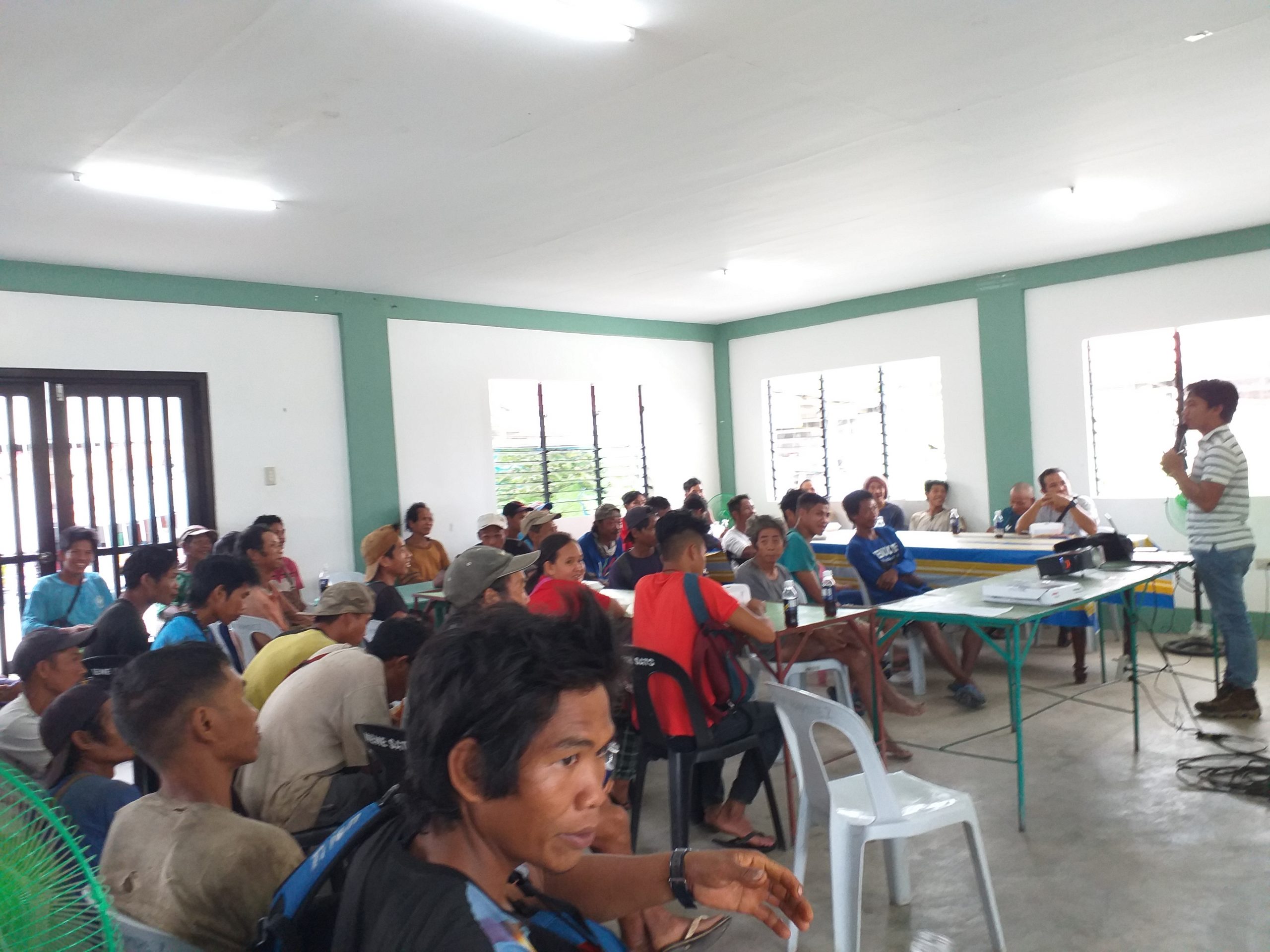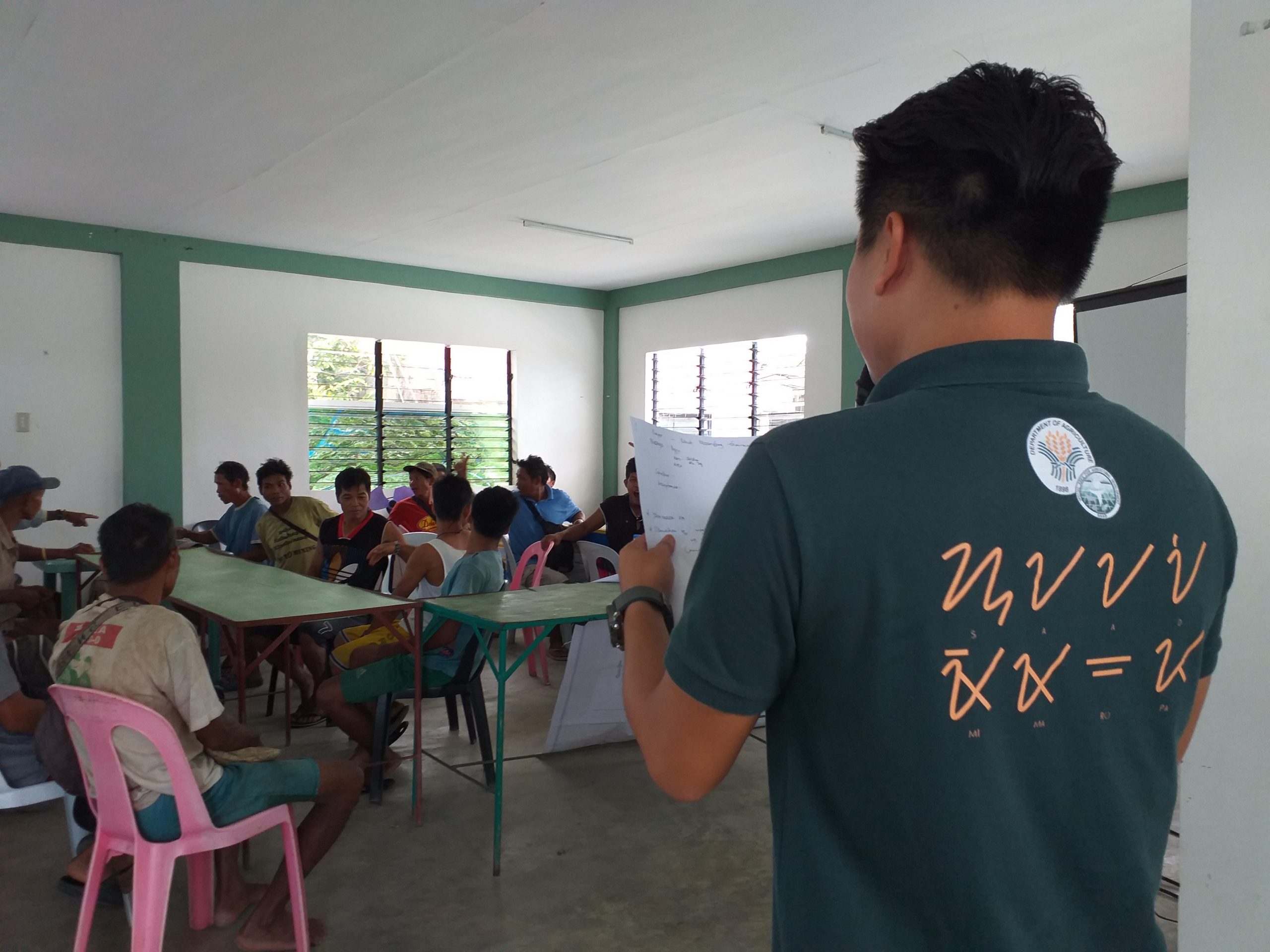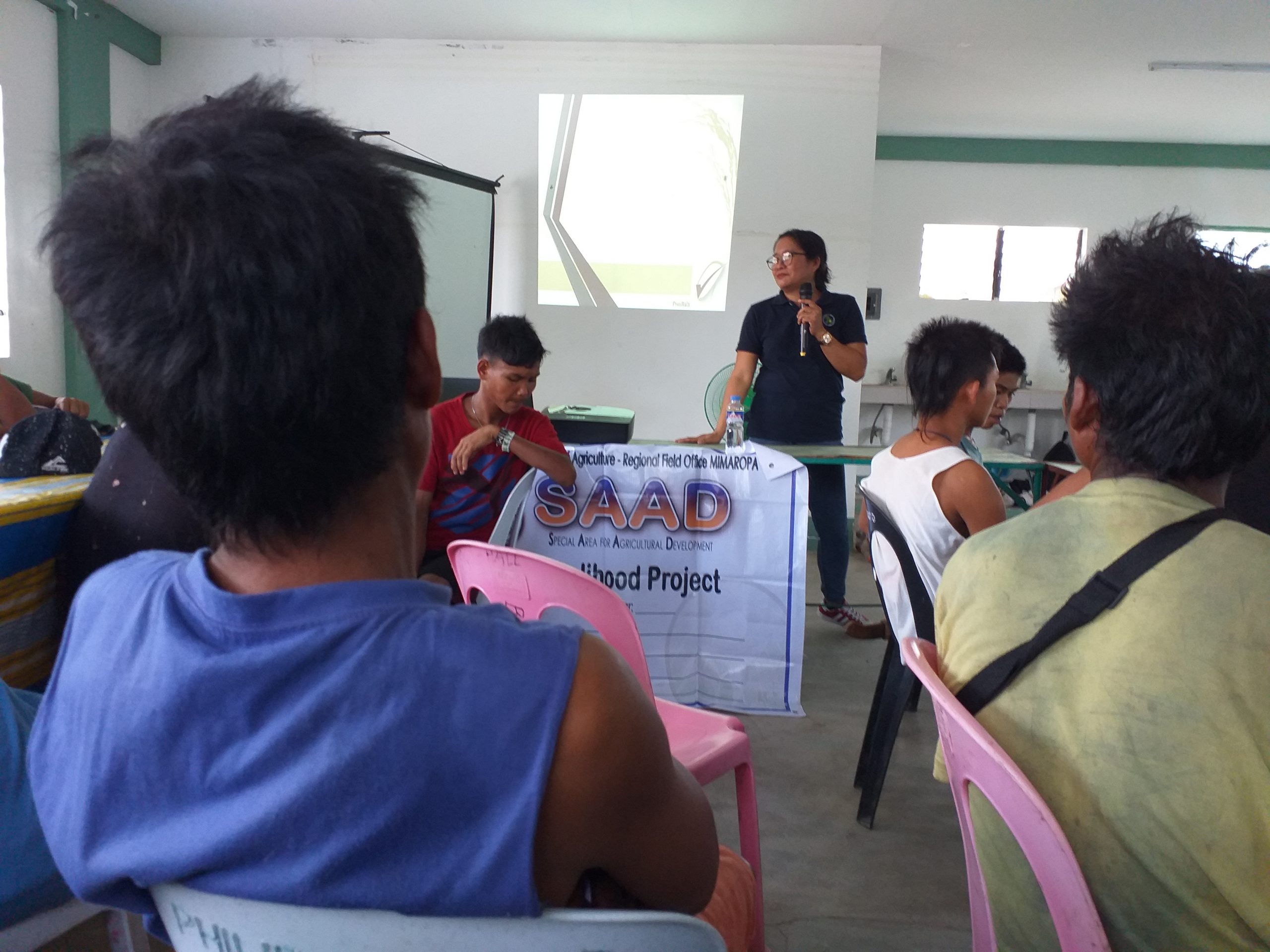OCCIDENTAL MINDORO, October 17, 2022 – The Department of Agriculture – Special Area for Agricultural Development (DA-SAAD) Program conducted a training on Palaycheck System or key concepts in upland rice cultivation to four (4) indigenous Mangyan farmers associations (FAs) which aims to introduce new farming techniques for an increased yield.
Mr. Romeo Parocha Jr., Agriculture Technician (AT) from the Municipal Agriculture Office, taught 90 Mangyan indigenous people (IP) and rice farmers the PalayCheck system for efficient upland farming, adducing as well some experiences from other IP farmers like Aetas and Igorot who were given the same training.
Nine (9) farmers from Ilya, Taganop, Mantay, Masay, and Sangay Farmers Association (ITaMMaSaFA) and 31 members of Samahang Magsasakang Katutubo ng Monteclaro (SMKM) were trained on the first day, followed by 21 farmers from Sitio Dulis, Abong, Salafay, Hubkob Farmers Association (S. DASH FA) and 29 representatives from Uyugan mga Ama sa Bato Ili as Fangabuyagan (UMABIF) on the second day. In total, 91 farmers were accommodated for the said specialized training.
PalayCheck System
PalayCheck is a systematic guide for effective crop management that aims to: Introduce the best technologies to achieve Key Check; Encourage farmers to weigh up their accustomed practices in crop management from the recommended procedure; and Confute farmers’ misbeliefs in crop management practices and redress them, to increase yield and income, and prevent environmental abuse.
The idea of PalayCheck started in Australia that helped them to increase their crop produce to 6 tons per hectare (ha) back in 1986, which jumped to 9.5 tons per ha in the year 2000. In the Philippines, PalayCheck was first introduced in 2004.1
Currently, PalayCheck is being implemented across the country, from the Northern region of Ilocos to the land of Southern Cotabato.2
IP farmers are undeniably accustomed to different cultural practices in farming and its necessary stages such as selecting seeds, cultivation, and storage.
PalayCheck does not necessarily refute and invalidate these rich cultural practices but seeks to offer a systematic approach to better farming methods for an increased yield.
Some Mangyan IP farmers reported that they do not employ any kind of fertilizer because of their long tradition of relying solely on nutrients found in the soil. This practice leads to soil exhaustion that drains its nutrients, subsequently driving IP farmers to move to another area to farm.
FAs’ struggle to abundant yield
The four (4) FAs harvest in 2021 reached only an average of 50% of the ideal yield which ranges from 4-5 metric tons (mt) per ha according to the AT, this is due to a variety of factors such as ineffective practices in crop management and uncontrolled weed growth and pests due to lack of proper fertilization.
Table 1. FAs’ Rice crop harvest from October to November 2021

Balanced Fertilization Strategy
Effective fertilization was also highlighted in the training. Although some rigidly follow their tradition in farming and do not use any kind of fertilizer, some IP farmers’ reported that they depend on synthetic fertilizers for their lands, but the skyrocketing prices of inorganic inputs became unaffordable for most of them. Consequently, pushing most farmers to leave their infertile lands and move to a new land to farm through kaingin or slash and burn.
Mr. Parocha Jr. advised the farmers to turn to Balanced Fertilization Strategy (BFS), a method combining organic and inorganic inputs, to fertilize their lands and avoid deforestation.
“Sa halip na kayo ay lumipat nang lumipat ng inyong tataniman na maaaring magdulot ng pagkakalbo ng ating kabundukan, mas mainam na kayo ay mag-focus sa lupang tinataniman ninyo ngayon. Patabain ninyo ang lupa ninyo. Nasa kabundukan ang napakaraming resources para sa paggawa ng organikong pataba,” the AT said.
(Instead of moving from one place to another to farm which may result in deforestation, it is better that you focus on your current lands. Cultivate your lands. Resources in making organic fertilizers are rich in your area.)
In addition, spraying the extract of makabuhay (Tinospora rumphii Boerl) leaves on rice fields to keep harmful insects at bay was also taught as an effective natural alternative in safeguarding crops from pests.
“Hindi namin alam na pwede palang gamitin ‘yung katas ng makabuhay panlaban sa peste. Maraming [makabuhay] doon sa amin sa kabundukan. Susubukan namin gamitin ‘yan para hindi na kami bibili [ng kemikal na pestisidyo],” shared a beneficiary from S. DASH FA.
(We did not know that makabuhay leaves can be used to fight pests in our fields. Makabuhay grows abundantly in our community. We will try to use it so we will not have to buy chemical pesticides.)
Upscaling Production
To help improve IP farmers’ production, ITaMMaSaFA and SMKM were identified as recipients of upland rice production and organic upland rice production under FY 2020-2021. They received interventions with supplementary livestock worth Php 2,466,700.00 and Php 3,352,232.00, respectively.
Table 2. Interventions awarded to ITaMMaSaFA and SMKB

Table 3. Interventions awarded to UMABIF and S. DASH FA

Brgy. Captain Von Ortelano of Moteclaro encouraged the beneficiaries to apply the farming methods discussed from proper fertilization to record-keeping, and also to share their knowledge with their co-members who were not able to attend the training. He also reminded the beneficiaries to take care of the interventions awarded to them. ###
Writer: Dianne Francis A. Sy-Gorembalem, DA-SAAD MIMAROPA Information Officer
Sources: Jercel N. Catubig, DA-SAAD Area Coordinator – San Jose,
Charlie Dax A. Yadao, Agriculture Technician II, DA-APCO Occidental Mindoro,
Laurence T. Real, Agriculture Technician II, DA-APCO Occidental Mindoro.
For related stories, see:
__________________________________________________________
1. PalayCheck Primer (2020), https://rcef.da.gov.ph/wp-content/uploads/2021/05/PalayCheck-2020-Primer.pdf
2. Mataia, Alice & Olivares, Resi & Manalili, Rowena & Malasa, Ronell & Litonjua, Aileen & Redondo, Guadalupe & Relado, Rhemilyn & Paran, Suenie & Tolentino, Charis. (2015). Impact of Farmer Field School-Palaycheck (R) in the Irrigated Rice Areas in the Philippines. Crop protection newsletter. 40. 49-61.




Comments (0)